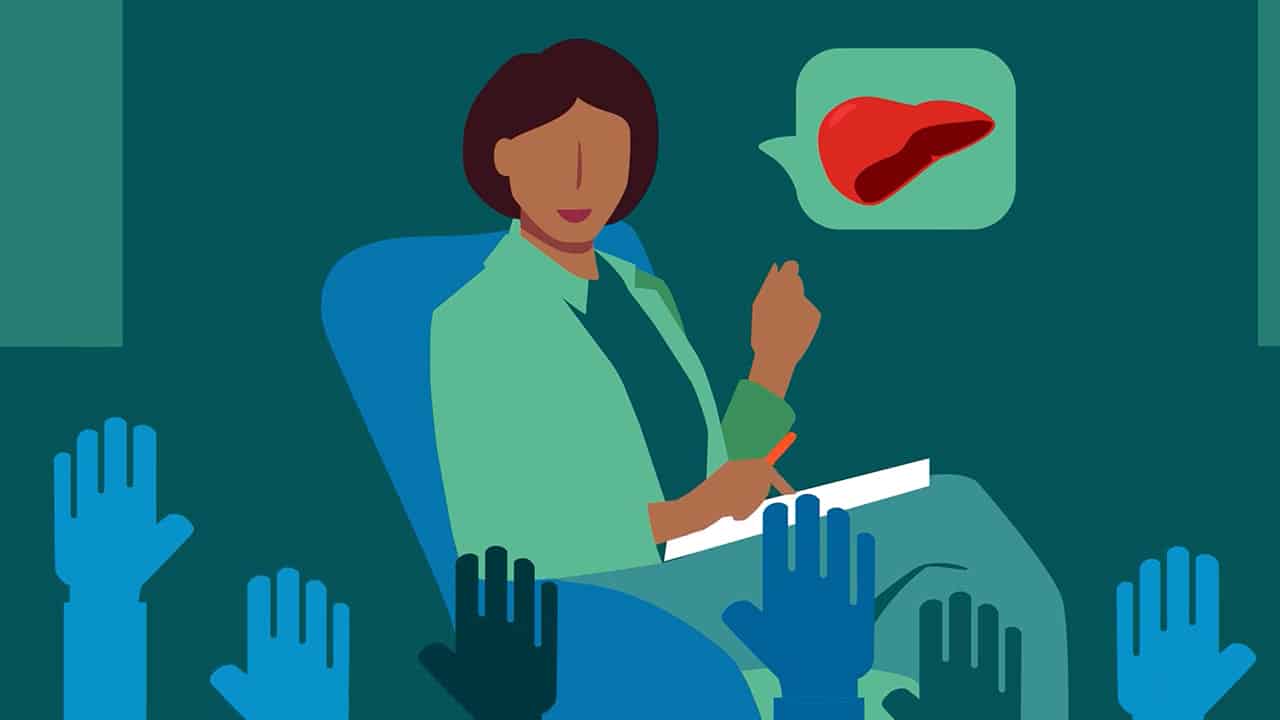A Toolkit for Living Donor Liver Transplant Recipients
This toolkit was developed for people who’ve been evaluated and approved as a liver transplant candidate, been placed on the national transplant waiting list, and have decided to pursue the option of finding a living donor. Living donor liver transplant can be a lifesaving alternative to waiting on the transplant list. It can save you valuable time, reduce the risk of your liver condition getting worse, and result in improved long-term outcomes. The following tips, tools, and sample materials will help prepare you to undertake the process of finding a living donor.
Finding a living donor
The following checklist outlines the main steps you’ll need to take to find a living donor.
- Find a transplant center that performs living donor liver transplant.
- Establish a support team. Involve family and friends right from the start, and include them throughout the process.
- Identify a living donor champion who will spearhead your search for a living donor.
- Work with your transplant team to learn as much as possible about living donor liver transplant. Having answers to questions that potential donors may have about living donation will prepare you and your support team to engage in conversation about your need for a living donor.
- You, your champion, and the rest of your support team should share your story with as many people as possible at social gatherings, work, school, clubs, places of worship, etc.
- Extend your outreach efforts by using email, social media, local traditional media (newspapers, radio, television), and other methods like pamphlets or business cards; be creative.
- Concentrate on staying as healthy as possible; let your support team carry the load.
Finding a transplant center that performs Living Donor Liver Transplants
Not every hospital offers living donor liver transplant, so you’ll want to find a hospital that does. The following two organizations provide this information.
- Scientific Registry of Transplant Recipients (SRTR): This organization performs statistical analyses regarding organ transplantation in the U.S.; it does not manage the waiting list system. SRTR can provide you with a lot of information about transplant centers – such as how many transplants were performed and what the outcomes were – to help you make an informed decision about which center may be right for you. Take the following steps to start your search:
- Select the appropriate organ: At the top of each page, there is a drop-down menu where you can select “Liver.”
- Select an area: Enter a state, zip-code, or program name. If you’re interested in any transplant center in the U.S., leave the “Search by Postal Code or Program Name” box blank, before clicking the “Search” button.
- Check for living donor liver transplants: Your search will produce a list of hospitals, with a column labeled “Living Donor Transplants in a Year.” If a hospital performs LDLT, you will see a number listed in that column indicating how many living donor transplants they’ve performed that year.
For a more detailed guide on using this website, you can visit the online help guide.
- Organ Procurement and Transplantation Network (OPTN): This organization is responsible for transplant organ distribution in the U.S. The goals of the OPTN are to increase the number of transplants and access to transplants, improve survival rates following transplantation, and promote patient safety.
To obtain information about specific transplant centers, click here. Follow these steps to start your search:
- Step 1: Select your state
- Step 2: For a report that includes all of the centers in your state:
- Choose Center: “All Centers”
- Choose Category: “Transplant”
- Choose Organ: “Liver”
- Step 3: Select the report(s) that gives you the data you want. For example:
- Transplant by Donor Type: This will tell you how many living donor liver transplants were performed at that hospital.
- Living Donor Liver Transplants by Donor Relation: This report breaks down how and if the living donor was related to the recipient.
There are other reports that you can choose from including transplant data by recipient gender, ethnicity, age, and so on.
Generally, patients first need to identify centers where they may want to get a transplant and then contact those centers directly.
Educational Materials
| Image | Title | Link |
|---|---|---|
| Explaining living donor liver transplant: an educational tool | ||
| Living Donor Liver Transplant Full Toolkit | ||
| Posting pointers to keep people interested | ||
| Sharing your story on social media: how to use Facebook | ||
| Tips for crafting your story and writing posts | ||
| Word of mouth: The importance of conversation |
Videos
Related Links
There are many organizations where you can find additional information about liver disease, living donation, and organ transplantation. The United Network for Organ Sharing (UNOS) has a toll-free patient services line (1-888-894-6361) where patients, family, friends, or interested parties can call to discuss their questions and concerns.
In addition, the following organizations offer useful information on their websites:
- American Transplant Foundation
- Children’s Organ Transplant Association (COTA)
- Donate Life America
- HelpHopeLive
- National Foundation for Transplants (NFT)
- National Institutes of Health
- National Living Donor Assistance Center
- Organ Procurement and Transplantation Network (OPTN)
- Transplant Recipients International Organization (TRIO)
- United Network for Organ Sharing (UNOS)
- Transplant Living (UNOS)
- US Department of Health and Human Services
Last updated on October 3rd, 2023 at 02:51 pm





